- Felisac
- September 28, 2023
- 8:44 am

FiberMall
Answered on 8:44 am
The 100G-SWDM4 transceiver uses four wavelengths in the 850nm window, while the 100G-SRBD transceiver uses two wavelengths in the same window. This means that the 100G-SWDM4 transceiver has a higher spectral efficiency and can support more channels on the same fiber. However, the 100G-SRBD transceiver has a lower insertion loss and a higher tolerance to modal dispersion, which can improve the signal quality and reliability.
The 100G-SWDM4 transceiver can support up to 70m over OM3 MMF or up to 100m over OM4 MMF, while the 100G-SRBD transceiver can support up to 70m over OM3 MMF, up to 100m over OM4 MMF, or up to 150m over OM5 MMF. This means that the 100G-SRBD transceiver can extend the reach of 100G transmission over duplex MMF by using OM5 MMF, which is a new type of MMF that has a wider bandwidth and lower attenuation than OM4 MMF.
The 100G-SWDM4 transceiver is compatible with the QSFP28 form factor and LC connectors, while the 100G-SRBD transceiver is compatible with both QSFP28 and QSFP form factors and LC connectors. This means that the 100G-SRBD transceiver can support both 100G and 40G ports, while the 100G-SWDM4 transceiver can only support 100G ports. However, the QSFP28 form factor is more compact and power-efficient than the QSFP form factor, which can save space and energy in data centers.
Both the 100G-SWDM4 and 100G-SRBD (sometimes called a “BIDI” transceiver) have been widely deployed within the industry, and share the same optical reach and fiber type (70m/100m over OM3/OM4 duplex MMF).
However, the 100G-SWDM4 and 100G-SRBD do not interoperate with each other.
If interop with future 400G optics is a consideration, then the QSFP-100G-SRBD should be considered. The QSFP-100G-SRBD transceiver will interoperate with future Arista “400G-BIDI” transceivers. That is, an Arista OSFP-400G-SRBD or QDD-400G-SRBD transceiver will support breakout into 4x QSFP-100G-SRBD. The SWDM4 does not have a path for interop with future 400G optics.
The decision on which optic to will often depend on interop requirements. For example, for applications that require optical interop with third party 100G BIDI optics, the QSFP-100G-SRBD should be used.
People Also Ask
Unlocking the Potential of a Fiber Optic Switch in Modern Networks
Fiber optics has transformed contemporary network systems’ efficiency, dependability, and construction, owing to the sheer speed provided. Fiber optic switches are critical components of such structures for their ability to control the efficacy of information processing over sprawling tangled frameworks. This piece analyzes how these switches can make a difference
Active Connectors: LC, CS, SN, MPO, PC, APC
Active connectors are passive optical devices frequently used in conjunction with optical module interfaces. These connectors, which are attached to the optical side of a module, generally adhere to standardized processes to form universally accepted physical and performance interfaces, thereby enabling interoperability among various manufacturers. Standardization, as a process, involves
Unlock the Potential with a 2.5 GB Switch: The Ultimate Guide to Multi-Gigabit Networking
Traditional gigabit Ethernet is being replaced with multi-gigabit networking because modern computing and connectivity demands have outgrown it. This shift is driven by the need to lower cost and improve access to fast network performance—what is popularly termed as the 2.5 GB switch. You may be a tech aficionado looking
Choosing the Best 16-Port Gigabit Ethernet Switch for Your Home Network
Setting up an easy-to-use and fast home network is becoming simpler as new technology comes out. A 16-port Gigabit Ethernet switch streaming HD content, online gaming, or smart home device integration becomes a critical piece for wired connections across competing devices. Performance and budget features often contradict each other creating
NVIDIA Releases Silicon Photonics CPO Switch
During GTC 2025, NVIDIA released the NVIDIA Spectrum-X (based on the Ethernet standard) and NVIDIA Quantum-X (based on the InfiniBand standard) silicon photonic network switches, enabling AI factories to connect millions of GPUs across regions while significantly reducing energy consumption and operating costs. NVIDIA Silicon Photonics CPO The partners listed
How to Use the XGSPON ONU Stick SFP+
Fiber-to-the-Home (FTTH) technology is revolutionizing internet connectivity. However, the closed devices provided by internet service providers often restrict users’ freedom. If you have a router or switch with an SFP+ interface, such as the Ubiquiti Dream Machine Pro, Mikrotik CCR series, or an OPNsense device, the XGSPON ONU Stick SFP+
Related Articles
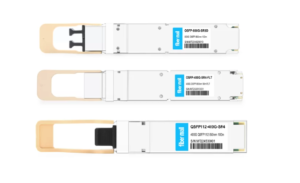
800G SR8 and 400G SR4 Optical Transceiver Modules Compatibility and Interconnection Test Report
Version Change Log Writer V0 Sample Test Cassie Test Purpose Test Objects:800G OSFP SR8/400G OSFP SR4/400G Q112 SR4. By conducting corresponding tests, the test parameters meet the relevant industry standards, and the test modules can be normally used for Nvidia (Mellanox) MQM9790 switch, Nvidia (Mellanox) ConnectX-7 network card and Nvidia (Mellanox) BlueField-3, laying a foundation for
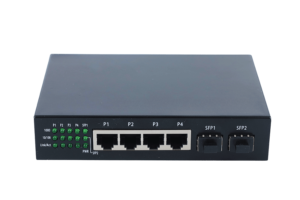
Unlocking the Potential of a Fiber Optic Switch in Modern Networks
Fiber optics has transformed contemporary network systems’ efficiency, dependability, and construction, owing to the sheer speed provided. Fiber optic switches are critical components of such structures for their ability to control the efficacy of information processing over sprawling tangled frameworks. This piece analyzes how these switches can make a difference
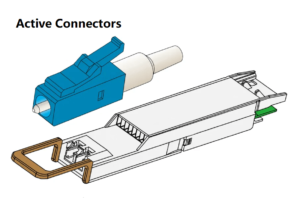
Active Connectors: LC, CS, SN, MPO, PC, APC
Active connectors are passive optical devices frequently used in conjunction with optical module interfaces. These connectors, which are attached to the optical side of a module, generally adhere to standardized processes to form universally accepted physical and performance interfaces, thereby enabling interoperability among various manufacturers. Standardization, as a process, involves

Unlock the Potential with a 2.5 GB Switch: The Ultimate Guide to Multi-Gigabit Networking
Traditional gigabit Ethernet is being replaced with multi-gigabit networking because modern computing and connectivity demands have outgrown it. This shift is driven by the need to lower cost and improve access to fast network performance—what is popularly termed as the 2.5 GB switch. You may be a tech aficionado looking
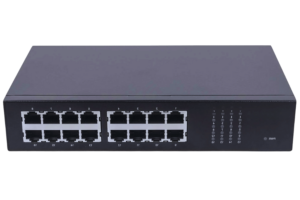
Choosing the Best 16-Port Gigabit Ethernet Switch for Your Home Network
Setting up an easy-to-use and fast home network is becoming simpler as new technology comes out. A 16-port Gigabit Ethernet switch streaming HD content, online gaming, or smart home device integration becomes a critical piece for wired connections across competing devices. Performance and budget features often contradict each other creating
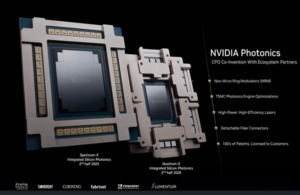
NVIDIA Releases Silicon Photonics CPO Switch
During GTC 2025, NVIDIA released the NVIDIA Spectrum-X (based on the Ethernet standard) and NVIDIA Quantum-X (based on the InfiniBand standard) silicon photonic network switches, enabling AI factories to connect millions of GPUs across regions while significantly reducing energy consumption and operating costs. NVIDIA Silicon Photonics CPO The partners listed
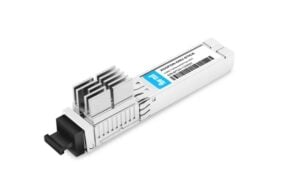
How to Use the XGSPON ONU Stick SFP+
Fiber-to-the-Home (FTTH) technology is revolutionizing internet connectivity. However, the closed devices provided by internet service providers often restrict users’ freedom. If you have a router or switch with an SFP+ interface, such as the Ubiquiti Dream Machine Pro, Mikrotik CCR series, or an OPNsense device, the XGSPON ONU Stick SFP+
